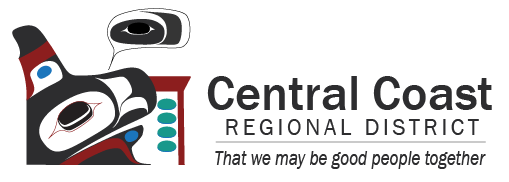Emergency Response
Emergency Response is when actions are taken such as implementing the Central Coast Regional District Emergency Management Plan to respond to imminent or occurring emergencies to safely manage impacts. In an emergency, site response is responsible for the tactical activities in responding to the situation. It may also be necessary to open and staff an Emergency Operations Centre and provide Emergency Support Services to support and coordinate the overall response efforts at the site.
Emergency Operations Centre
An Emergency Operations Centre (EOC) is a hub of emergency response coordination and supports the overall response efforts. There is no permanent location for an EOC as each situation may be different. In an emergency situation, the EOC will be staffed by a combination of CCRD staff and personnel from other agencies who are trained and tasked with specific duties to support the functions of the EOC.
Emergency Support Services
Emergency Support Services (ESS) is a program that provides short term disaster relief (up to 72 hours) to those affected by emergency situations including fire, floods, or earthquakes. It depends on community volunteers to plan and provide for the essential needs of individuals, families and response workers and may include food, lodging, clothing, emotional support, information about the crisis, and finding loved ones. Additional services may include first aid, child minding, pet care, and transportation. Through the ESS plan, communities can improve their ability to cope with disaster by establishing the network of volunteers and developing liaisons with businesses, organizations and service providers willing to share resources in times of trouble.
For more information about ESS, please visit: https://www2.gov.bc.ca/gov/content/safety/emergency-preparedness-response-recovery/volunteers/emergency-support-services
Mitigation
Emergency Management Mitigation includes projects and activities that minimize or avoid potential impacts of emergencies. Current mitigation projects in the CCRD includes flood risk assessment to model flood scenarios in the Bella Coola Valley and its main tributaries including Thorsen Creek, Snootli Creek, Nooklikonnik Creek, and Nusatsum River. The flood risk assessment will integrate climate change considerations and help to identify flood hazards, level of risk, impacts to the community, and how to reduce risk.
Mitigation is also a shared responsibility especially living in a fire-prone ecosystem. Go to FireSmart (https://www2.gov.bc.ca/gov/content/safety/wildfire-status/prevention/firesmart) for information about how to protect your family, and community from wildfire.
Recovery
Recovery programs help to repair and restore communities to a pre-emergency condition through physical restoration and reconstruction, economic impact studies, counselling, financial assistance programs, temporary housing, and health and safety information. The main priorities in short-term relief efforts are to restore essential services.
